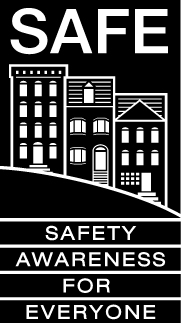How to be a Good Witness

SFPD Park Station Captain Chris Pedrini recently reached out to San Francisco residents about crimes in progress and how to be a good witness when reporting these incidents to the police. When the community helps police by reporting crimes and providing pertinent info—one aspect of community policing—San Francisco becomes a safer city in the long run.
“The last thing we want is for anyone to put themselves in additional danger while a crime is occurring,” said Captain Pedrini. “However, if you do call to report a crime you will be asked several questions. While these questions may seem redundant and possibly even invasive at times, they are designed to get the most accurate information necessary to assist officers with helping a victim and/or in apprehending a suspect.”
Here’s what Captain Pedrini had to say about how city residents can be good witnesses for police when reporting a crime in progress:
Location, Location, Location. If you don’t know the exact address, a street name and the closest intersection will help. Landmarks are helpful for dispatch staff as well. “The 911 system provides an address, phone number and resident/business name if the call is from a landline. Cell phones only provide latitude and longitude,” said Captain Pedrini. So the more specific you can be about the location when reporting a crime, the better.
What happened? Was it a crime or an accident? Dispatchers will ask direct questions to try and ascertain what the officers will be dealing with at the scene.
Is anyone injured? Is medical assistance necessary?
Are/were any weapons involved? If so what kind of weapon(s)? Where is the weapon now?
Is the suspect still there? Is he/she still in the area? Who is the suspect? What do they look like? The dispatcher will prompt you for a general physical description such as race, height, weight, hair color and clothing the suspect is wearing. “Now that we’re reopening, people still have to be aware of their surroundings,” said SF SAFE’s Furlishous Wyatt. “Proper description taking is very important—clothes are not as important as physical characteristics. Jewelry and shoes usually stay the same. Tattoos; scars, hair line, gait of their walk, smell of them [and] height/weight/eye color” are key when describing a suspect.
If the suspect left, try to get a direction of travel. Did they leave on foot or in a vehicle? If they left in a vehicle, try to get a description of the vehicle (i.e. color, make, model, body style and license plate). Be sure to note if there was anything unusual about the vehicle (i.e. camper, bumper stickers, broken windshield, tinted windows, etc.). When witnessing a crime, the 911 dispatcher will ask for the aforementioned information and prompt you for answers, per Captain Pedrini.
To report a crime in San Francisco: Dial 9-1-1 only in an emergency (it is an emergency if: there is an immediate threat to you or others; the crime involves
a weapon; the crime is in progress or you know the suspect’s location); and if it isn’t an emergency, you will get help most quickly by calling the SFPD’s non-emergency line, at 1-415-553-0123 for crimes that occurred in San Francisco. Learn more here.
